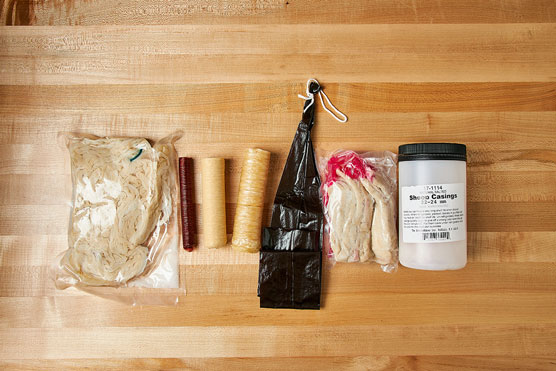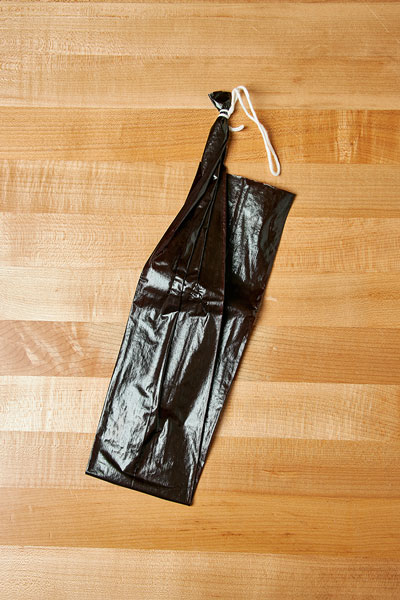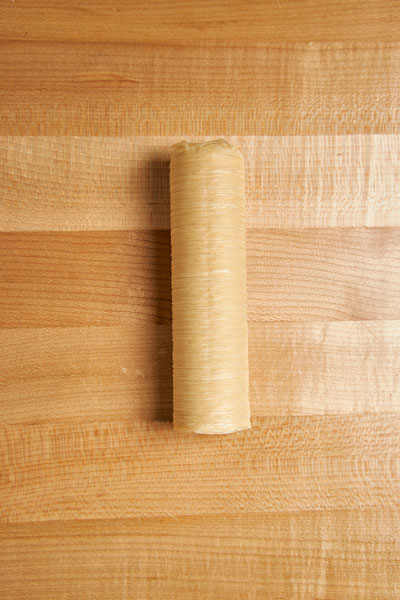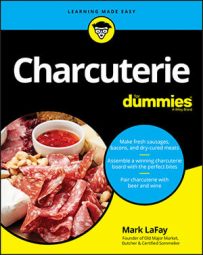- Natural casing. This sounds as awesome as you may be imagining. Natural (gut) casing is derived from the intestines of pigs, sheep, or cows. Each species has attributes that make them desirable for different applications.
- Hog casing. These casings are great for fresh and smoked sausages because of their durability and size. They are somewhat durable and not as prone to tearing as sheep or collagen casings. They aren’t too thick, which means they aren’t tough to chew through. Hog casings range in size from 28 to 42 mm in diameter.
- Sheep casing. Smaller critters have smaller guts, and sheep are no exception. Casings made from the intestines of sheep are smaller in diameter, and much more fragile than hog casings. They are an ideal size for breakfast sausage links. Sheep casings can range in size from 19 to 26 mm in diameter.
- Beef middles casing. Beef middles are the thick sections of a cow’s intestine. They are extremely durable and are generally used for making salamis. Beef middles aren’t edible and are usually peeled off prior to eating. Beef middles range in size from 2 to 2.5 inches in diameter.
- Beef bung casing. Beef bung is the appendix of a cow. Large-format salamis are cased in beef bungs, and are sealed off on one side. These casings are extremely durable but not all that edible. Beef bungs range in size from 4.5 to 5 inches in diameter and are approximately 18 inches in length.
The following figure shows several different types of casings next to each other to give you context for the differences.
 Photo by David Pluimer
Photo by David PluimerHog, sheep, and beef casings.
- Fibrous casing. Cellulose-based casings are strengthened with natural plant fibers. This gives these casings extra strength to ensure very tight fills. Fibrous casings breathe, which means that when you smoke them, the smoke penetrates the meat to impart a smoky flavor. Fibrous casings are not edible. Fully cooked summer sausage typically uses these casings. This figure shows an example of a fibrous casing.
 Photo by David Pluimer
Photo by David PluimerFibrous casing prior to stuffing.
- Cellulose casing. Cellulose casings are similar to fibrous casings, but they lack the additional plant fibers that give fibrous casings the additional strength needed for larger-diameter sausages. Cellulose casings are generally used for hot dogs and frankfurters. They are peeled off after cooking, which makes the sausages “case-less.”
- Collagen casing. Collagen casings are derived from animals, primarily cows. The materials are extracted from the hide of a cow, as well as its bones and tendons. A collagen casing is edible and permeable. This style of casing is growing in popularity because it is easier to use than gut (natural) casings. At Old Major Market, we use collagen casings for all of our breakfast links. The following figure shows a collagen casing.
 Photo by David Pluimer
Photo by David PluimerCollagen casing.
Where to buy sausage casings
There are several options for buying sausage casings on the internet! If you have a local butcher, they may have some sausage casings that you can buy, but your best bet is to purchase your casings online.If you don’t want to flip back, here’s a quick list in my order of preference:
Fibrous, cellulose, collagen, and even beef middles and bungs don’t come with many, potentially confusing, options. You can shop based on the size, color, and quantity of the casings. Sheep and hog casings tend to have quite a few options that can affect both the cost of your sausage and the quality of the end result. Here are some things to consider when shopping for sheep and hog casings:- Pre-tubed or not. In order to stuff a sausage casing, you will need to place the casing over the horn of your stuffer. A tubed casing is simply a casing that has a hollow plastic sheath running through it. This makes it very quick and easy to get an entire casing on the horn of your stuffer. If the casing is not pre-tubed, the job of putting the casing on the horn will take a little bit longer.
- Whiskers. “Whiskers” are the capillaries that provide blood flow to the intestines. When the intestines are removed with a knife, these capillaries may not be completely removed. What is left over looks like a whisker. Whiskers generally disappear during cooking, but if you don’t like their appearance, you can purchase a whisker-free product that is “shaved.” Another option is to purchase an inverted casing so that the whiskers are on the inside and not visible.
- Natural casings can be packed in several different ways. The two most common types of packages that you will run into are listed here:
- Dry salted. These casings are sold in bags or plastic tubs and are packed in a large quantity of dry salt. They are usually cheaper than casings packed in salt water, but generally require extra time to prep for use.
- Wet brine. These casings are packed in bags or buckets of extremely salty water. They are a little more expensive than dry-salted casings, but they require less prep time prior to usage.
Care and prep of casings
Natural casings, regardless of how they are packed, should be kept refrigerated. This will ensure their maximum lifespan. All other casings should be kept sealed in a bag, and stored in a dark, cool, dry place. Collagen casings are extremely susceptible to changes in humidity. They are usually packaged in sealed plastic or Mylar bags with desiccant packets to ensure there is little to no humidity in the packaging.When you start gearing up to stuff sausages, some prep work will be involved to get your casings ready to use. Cellulose and collagen casings do not need to be soaked in water prior to use; in fact, soaking collagen casings in water will ruin them. Fibrous casings will benefit from a brief soak in warm water. Natural (gut) casings, however, require the most TLC when being prepped for use. For dry-salted casings, follow these steps to get them ready:
- The packaging for your casings should tell you approximately how many pounds you can stuff with the casings contained within. Be sure to hydrate the appropriate amount of casings for the job at hand!
Make sure you hydrate more casings than you need. You will probably not fill them perfectly, and you will likely break several as you learn how to stuff sausages. There is nothing worse than running out of casings in the middle of stuffing sausages!
- Rinse salt from the casings with fresh water. I like to put the casings in a bowl and vigorously agitate the casings in the water with my fingers.
- Soften the casings by soaking them in fresh water at room temperature (approximately 70 degrees Fahrenheit) for 45 minutes to one hour. Gently massage the casings to ensure there are no dry spots.
Soaking overnight in the refrigerator is acceptable as well. Although this can make your casings slightly more fragile, I have never had a problem.
- Flush the casings by running fresh water into them and allowing it to run through them.
- Just prior to stuffing, transfer the casings into a clean bucket of 80-degree-Fahrenheit fresh water. This will loosen them up further and allow them to slide on and off the stuffing horn with greater ease.
When you are finished stuffing, if there are any casings left, save them by packing them in a bag or airtight container, and cover them with an excessive amount of salt. The salt will make the environment toxic to bacteria and will ensure safe storage in the fridge until you are ready to make sausage again!

